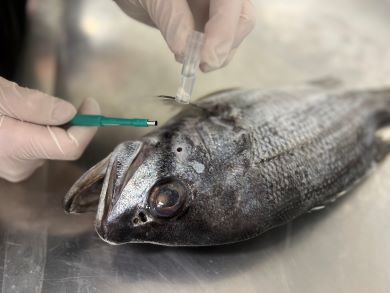Scientists from the Department of Primary Industries and Regional Development (DPIRD) are using innovative genomic techniques to better understand how populations of fish are connected along the Western Australia coastline.
For many demersal species, most adult fish do not generally move too far. Instead, the eggs they produce during spawning hatch into pelagic larvae, which disperse via ocean currents for several weeks before recruiting to a suitable habitat.
DPIRD Research Scientist Dr Sam Payet said some of the larvae remain within the area of their parents, but others can travel hundreds of kilometres.
“Where they go and how many of them get there determines how connected populations of a species are along our coast,” Dr Payet said.
“Understanding connectivity is fundamental to sustainable fisheries management, because it allows us to monitor and manage stocks at scales that reflect true population dynamics.”
The challenge is most species of marine fish have very large distributions and their larvae are cryptic and difficult to track, so DPIRD scientists use other techniques, like comparing the DNA of adults from different areas to see if they are genetically distinct.
 A sample of dhufish muscle is analysed and compared to dhufish from other locations to study connectivity and adaption
A sample of dhufish muscle is analysed and compared to dhufish from other locations to study connectivity and adaption
These genomic comparisons can also indicate whether fish possess unique adaptations suited to the local environment that they live in. This can help scientists understand how populations will be influenced by things like changes in the strength of the Leeuwin Current.
“The Leeuwin Current flows down the WA coast and brings in warm water from the tropics, it can influence connectivity and the survival of fish, especially during marine heatwave events,” Dr Payet added.
“DPIRD has worked with scientists across Australia to study these processes in numerous demersal fishes, including pink snapper and stripey seaperch using genomic techniques.”
A study of pink snapper found that fish north of Lancelin rarely mixed with those to the south, but those from Esperance shared a lot of their DNA with fish from South Australia.
Similar research is currently underway for the West Australian dhufish and other key demersal fishes.
“The iconic dhufish is endemic to WA, meaning it only occurs here. This research will help ensure that a network of populations is maintained across this species’ distribution, and support persistence of stocks that are more resilient to change,” Dr Payet said.